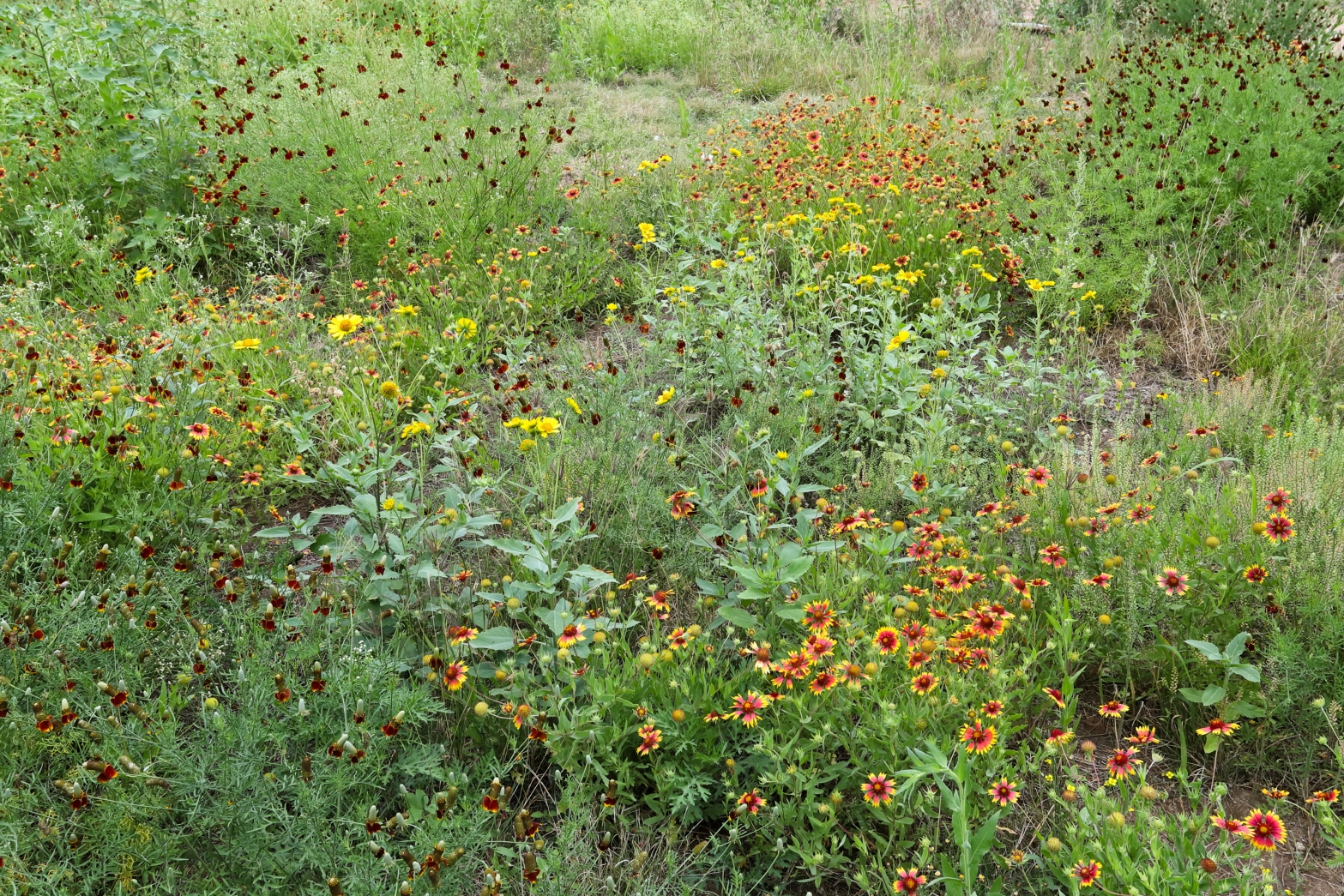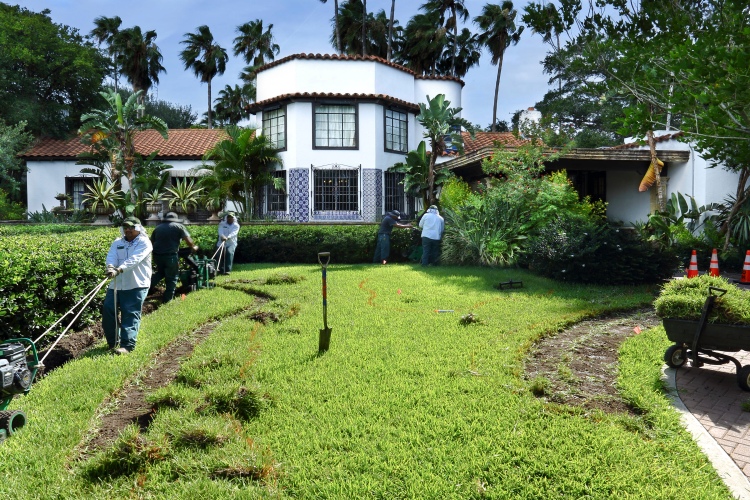It is no secret that the Rio Grande Valley is often dry for extended periods of time and that rain events are erratic and vary drastically from year to year. In his weather and climate summary in Nesting Birds of a Tropical Frontier, Dr. Timothy Brush notes that in Brownsville, Texas, annual rainfall varied from as little as 16 inches to as much as 42 inches between 1961 and 1996. On average, though, the region tends to get between 20 – 27 inches of rain, with a trend for more rainfall as you get closer to the coast.
However, due to the combination of climate change (which exacerbates Texas heat and periods of drought) and a growing demand on water supplies, the Rio Grande Valley is in an ongoing and historic drought where reservoir levels have never been lower. As of writing this, Falcon Reservoir is at 16.6% capacity (you can check levels for all Texas reservoirs at Water Data for Texas) and even extreme precipitation events like that of Hurricane Alex would not re-fill it (via Texas Public Radio).
The reality is that the necessity of water conservation is not going away. Using the Climate Explorer from the National Oceanic and Atmospheric Administration (NOAA), the number of dry days in Hidalgo County (days with less than 0.01 inches of precipitation) is expected to increase from the 1960 – 1990 observed average, indicating our region will experience longer periods between rain.

We also know that region’s population is expected to continue to grow, with some estimates projecting that the region’s total population could reach 3 million by 2050, which will increase demand on our water supplies. Technical Note 12-01 from the Texas Water Development Board shows that roughly 27% of statewide water use comes from the municipal sector, but that it is expected to grow to 38% by 2060. The note also shows that about 31% of single-family residential annual water consumption is dedicated to outdoor purposes, though a recent quote from the Laredo utilities director indicates that household water use for lawns and gardens may be closer to 50%. A paper published in the Texas Water Journal estimated that annual urban irrigation (including lawns, parks, golf courses, cemeteries, street medians, and rights-of-ways) was roughly 46.6% of total municipal water use (Cabrera et al. 2013). Regardless of the exact numbers, two things are clear: (1) a large portion of the water used by cities goes to maintaining grass-dominated landscaping and (2) that the Rio Grande Valley’s metropolitan areas will continue to grow.
Additional Green Grass Problems
While there are some benefits to having open patches of lawn – such as recreational spaces for sports, leisure, and cultural events – we often end up emphasizing lawns simply because of aesthetic preferences and social norms (Stacey et al. 2021). Unfortunately, the aesthetics of green lawns comes at a significant environmental cost even beyond that of extensive water use; air pollution, gas consumption, and high use of fertilizers, herbicides, and pesticides all contribute to maintenance costs (Sikorska et al. 2020). In addition to those environmental problems, traditional lawns and other grass-dominated urban landscaping typically do not support much biodiversity (Smith et al. 2015). Put together, the high water costs, pollution costs, and lack of biodiversity make traditional lawns a growing problem for urbanizing regions.
However, that also means that our oft-cut grass crop represents a great opportunity to make changes that will benefit both people and wildlife.
Ways to Reduce Water Use in Urban Landscapes
Water less frequently. Even if you want to keep your green lawn you can likely still reduce your water use. Most lawns do not require daily, or even weekly, watering (especially during times of year that are cooler or get more rain). Instead of following a rigid schedule, only water when grass shows persistent signs of drought stress. While St. Augustine Grass (Stenotaphrum secundatum) does like more moisture than Bermuda Grass (Cynodon dactylon), both do not require the rigorous watering we so often see in the region. A side benefit of watering your lawn less is that you won’t have to mow it as much either, which in turn means the grass needs less water to recover from the stress and water loss of being cut short. The more you target watering to address plant needs, rather than a blanket management plan, the more efficient your water use.
Water at the right time of day. Especially during hot times of year – which, lets be clear, is much of the year in the Rio Grande Valley – there can be a lot of water lost to evaporation. Watering during cooler times of day, whether that is in the morning, evening, or at night (the best option), can help reduce evaporation losses and make sure the water you are putting into your lawn and garden is getting used the most effectively.
Replace lawn with drought-tolerant native plants. If you are not attached to your lawn, one of the best things you can do to save water and help support wildlife is to use more native plants in landscaping. Many of our over 1,200 wild-growing plants in the region are able to survive, and even thrive, on much less water than traditional landscaping plants. There are many great examples of this in action in different parts of Texas, from using wildflowers instead of turf to creating more structured gardens. Here at Quinta Mazatlan, we replaced sections of our front lawn with a native plant garden (see images below).
There are also great local resources to get ideas on what native plants you could use in your space. The Native Plant Project has online handbooks that cover trees, shrubs, groundcovers, and butterfly-friendly plants. You can also visit Quinta Mazatlan and pick up our native plants trifold, which sorts native plants into categories by growth type (tree, shrub, vine, etc.) and also by purpose (bird-friendly, butterfly-friendly, edible, etc.). The Center for Urban Ecology also offers 2-hour workshops about gardening with native plants – see our programs page for more information.
The chance to create a positive change for people and wildlife is clear. By being smarter about watering our lawns, or by getting rid of them in favor of beautiful, drought-tolerant, wildlife-supporting native plants, we can build cities that are more resilient, more livable, and able to save water for the life-sustaining things we really need it for.
The question is: will we use less water in exchange for more life?





